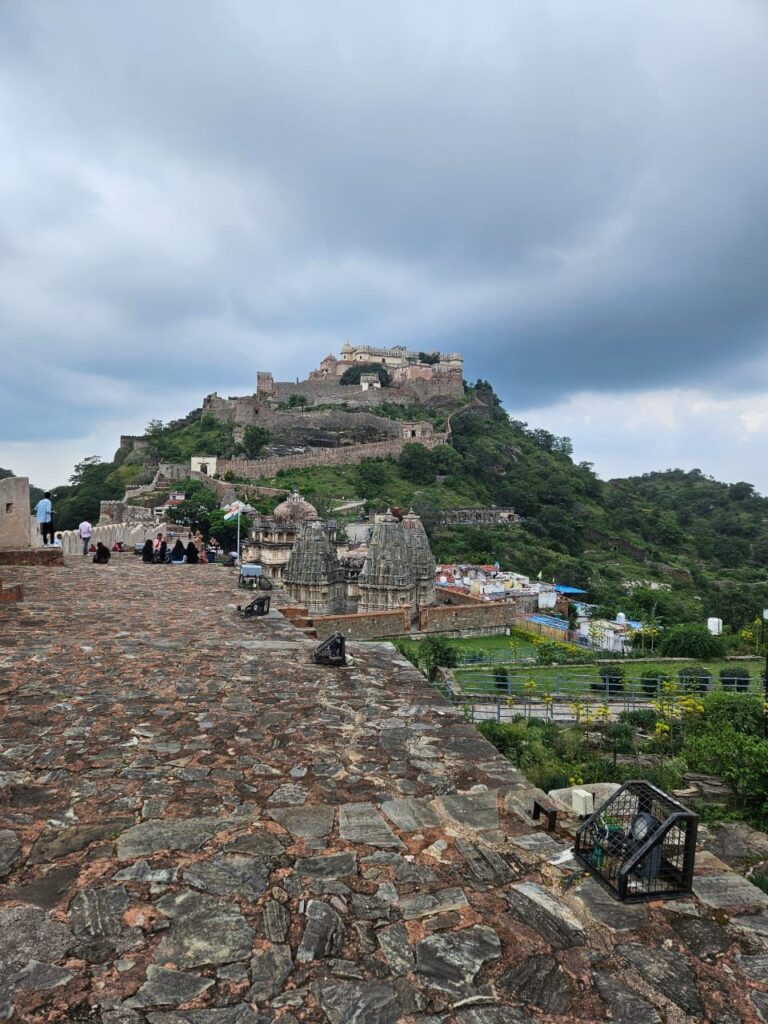
“Let’s plan a road trip”, suggested my boys. A little brain storming, the tech savvy gen scanned the web ,and our itinerary was planned. Bags packed, chauffer slots sorted and way before the dawn we hit the road for Kumbhalgarh, Rajasthan.
A few kilometres on the state highway and we were on Trans-Haryana Expressway/ National Highway 152 D. The 6-lane wide Greenfield access controlled expressway is a traveller’s delight. The high-speed transportation corridor eliminates traffic congestion, reduces pollution and offers a refreshing experience. A tinge of light from the horizon stealthily swept away the dark revealing a clear azure sky. Birds chirping and flying across as the magnificent sun dawned was mesmerizing; an ethereal experience etched forever in our mind. Our Grand Vitara cruised on the black tarmac amidst lush green fields.
As the expressway leaves Haryana and enters Rajasthan, one expects a change in the topography, dreary desert and dry land (all the geography lessons); much to our surprise, there is no significant change in the flora and fauna. But as we turned on to the state highway for Kumbhalgarh at Gomati Choraha, the scenario changed. Tall palm trees and vibrant bougainvillea adorn the Aravalli Hills. Here and there small lakes are found on both sides. Wheat and maize crops are cultivated in small step fields. We moved at a snail’s pace uphill the narrow road and had to pause often to let the cattle and carts pass by.
After almost twelve hours on the road, we checked in the resort. Our tented accommodation exuded royalty albeit with modern amenities. Lamps lit up as dusk fell. We danced our heart away to the reverberating beats of the folk music and gorged on lip smacking authentic rustic Rajasthani meal. Life moves at a relaxed pace here.
Early morning we set up for a local tour in an open Safari. Our guide took us to the Parshuram caves, showed us the origin of the Banas river (the main source of fresh water of the region) and local temples. The circuit offers breathe-taking views, picturesque moments. The area is sparsely inhabited tribal area, and has an old world charm about it. Handicrafts and tourism provide the livelihood. For the first time in our lives, we saw Sitaphal (custard apple) and Gond (edible gum) trees. At a view point, he stopped and pointed towards the far off habitation. This is Mewar- the green, the river, the lakes, the mountain regions, and that is Marwar- the dry, desert region.
We declined the offer to trek to the Ranakpur Jain Temple from that spot and moved on. The boys were enjoying the Gypsy King ride and were all praise as the 4 x 4 low 20 year-old vehicle went up the steep hill effortlessly.

The entrance to the UNESCO World Heritage fort of Kumbhalgarh is majestic. Built by Rana Kumbh, the birthplace of Maharana Pratap, the invincible fort has seven fortified gateways and 36 km long perimeter walls, the second longest continuous wall in the world. The well curate ancient forts, 360 Jain and Hindu temples are an archaeological marvel. You are transported back to the annals of bygone era, and time stands still. As the sun sets and floodlights flash, the fort stands majestic, steeped in history and legacy, an emblem of heritage, tradition and culture. There is so much to explore, so much to absorb but one has to return.
The tour of the grandeur and opulence provided an opportunity to recall our history lessons. The local market offers some budget friendly souvenirs. I shopped a couple of bright Bandhej and Lehariya sarees of Rangilo Rajasthan. All in all, a tour worth it.
Suruchi Kalra Choudhary
